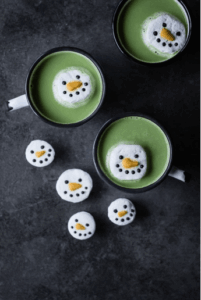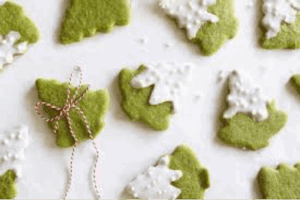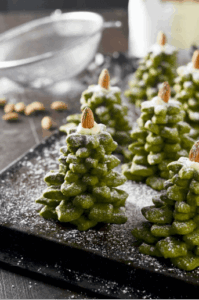Category: Other articles
Matcha Latte Art: Creating Beautiful Designs with Green Tea
Understanding the Art of Steeping Tea
The Oral Health Benefits of Green Tea
3 Reasons Why Drinking Green Tea Enhances Your Smarter Look
Add some color to your tea menu for Christmas.
As the end of the year approaches, many restaurants are starting to release new menus to welcome the festive season, including drinks and bakery items. But if you’re still unsure of how to create your own menu, Matchazui has compiled ideas and recipes for green tea drinks and desserts, so that green tea lovers can try to change up their menus and make them more fun.
Let’s start with hot matcha latte, a recommended menu of many shops that adds color to the Christmas festival. It’s easy to eat by adding cute snowman marshmallows. The method is not difficult because we start by making square marshmallows according to the marshmallow recipe of the favorite shop. Make them large enough to cut into small rounds. Use a toothpick with one pointed end to break off and dip the toothpick into melted orange white chocolate and draw a nose on the marshmallow. For the eyes, put 2 tablespoons of dark chocolate chips and 1/4 teaspoon of coconut oil in a small plate and microwave in 20-second increments, stirring a little at a time, until the dark chocolate is completely melted and smooth. Use a pointed toothpick to dip into the melted dark chocolate and smear it on the snowman’s eyes and mouth. Let the snowman chocolate set at room temperature before serving with your favorite hot matcha latte.
Next up is the Matcha Cookie Christmas Tree. Start by beating 1 cup unsalted butter, 2 tablespoons matcha powder, and 1 ½ cups sugar until fluffy. Add 1 egg yolk and 1 teaspoon vanilla and mix until combined. Sift together the flour, baking soda, and salt and set aside in another bowl. Place all ingredients in a bowl and mix until combined. Cover the dough and refrigerate for 30 minutes. Preheat oven to 180 degrees. Line a baking tray with baking paper.
Cut dough in half or quarters and roll out to about 1/6 – 1/4 inch thick. Cut out Christmas tree molds and place on prepared baking sheet. Bake each batch for 7 – 9 minutes. Decorate with white chocolate, microwaved for 20 seconds, or mix in a little red chocolate for a different design.
The intensity of the Christmas tree color depends on the amount of matcha powder added. Add some cuteness by tying it with a bow or packing it in a clear plastic bag to show off the cookie pattern.
A technique to make Christmas cookies more cute is when pressing the dough into the shape of a Christmas tree. You can press it into the shape of stars of various sizes so that after baking, you can arrange them in alternating layers, with each layer connected with a little white chocolate. Stick the star on top with almonds and sprinkle a little icing. You’ve got a green tea cookie menu for this Christmas season.
Another menu that just seeing it makes you think of a Christmas tree is Matcha Mont Blanc. You can use the regular Mont Blanc recipe, but just replace the chestnut cream on top with green tea cream and decorate with colorful icing cookies. It becomes a green tea Mont Blanc that will impress anyone who eats it.
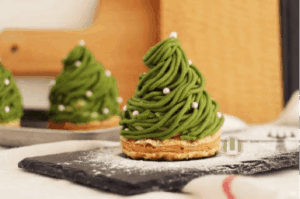
In addition to the tea menu above, which is a sample to give your tea shop some initial ideas for customizing their menu, there are many other green tea menus that can be sold during Christmas, such as Matcha Hot Chocolate or Matcha Macaron, or even Matcha Cake, which emphasizes red color with strawberries.
But if you’re not good at making desserts that require a lot of techniques, try adapting the no-bake green tea dessert menu (see more at shorturl.at/dpDS7) into a Christmas style. It’s another interesting idea. Especially if there are new menus and year-end campaigns with interesting promotions or activities, it will encourage customers to visit the shop even more (see more at shorturl.at/ceqKP). Because it’s not necessary for every shop to launch new menus during this festival. It might be difficult for some shops to always come up with new menus. Because according to Japanese belief, simply buying green tea to give to each other during various festivals is considered a blessing for good health (see more at shorturl.at/bcCHK).
Source
https://encha.com/pages/matcha-recipes
https://www.stephaniesuen.com/2018/12/08/mini-matcha-christmas-tree-sugar-cookies/
https://steemit.com/food/@alwayssmile/elegant-noble-french-dessert-mont-blanc
https://hostthetoast.com/matcha-cookie-christmas-tree-stacks/
The Truth About Drinking Green Tea with Milk: Is It Harmful to Your Health?
อย่างที่รู้กันอยู่แล้วว่าประโยชน์สูงสุดของการดื่มชาเขียว คือ ต้องดื่มแบบเพียวๆ ไม่ใส่นม น้ำตาล แต่ก็ใช่ว่าการใส่นมลงไป จะทำให้สูญเสียคุณค่าทางอาหารของชาไปทั้งหมด เพราะนมก็มีหลายประเภท ทั้งนมสด นมผง นมถั่วเหลือง นมอัลมอนด์ แต่ละชนิดก็ให้ประโยชน์ที่แตกต่างกันออกไป หากคุณต้องการได้รับประโยชน์สูงสุด การดื่มชาเขียวใส่นม จะทำให้คุณประโยชน์ของชาลดลงเท่านั้น แต่จะไม่สามารถขจัดประโยชน์ทั้งหมดได้
ประโยชน์ต่อสุขภาพที่สำคัญอย่างหนึ่งของชาเขียว คือ ประโยชน์จากคาเทชินซึ่งดีต่อหัวใจการไหลเวียนของเลือด คาเทชินเป็นอาวุธสำคัญของธรรมชาติที่เข้าไปทำหน้าที่ป้องกันการเกิดอนุมูล อิสระ และช่วยลดความเสี่ยงของการเกิดมะเร็งในร่างกาย ชะลอความเสื่อมของร่างกายและช่วยลดความเสี่ยงในการเกิดโรคมะเร็งอีกด้วย ซึ่งในนมจะมีโปรตีนที่พบ เรียกว่า เคซีน ตัวนี้จะทำปฏิกิริยาทางเคมีกับคาเทชินและลดประโยชน์ต่อสุขภาพ เพียงแค่ลดประโยชน์ที่ดีลง แต่ไม่ได้ผลิตสารเคมีที่ไม่ดีต่อร่างกาย


ดังนั้น หากจะช่วยเพิ่มประโยชน์ในการดื่มชาเขียวลาเต้แก้วโปรดของคุณ มีทางเลือกอีกมากมายในการใส่นมลงไป เช่น การเลือกนมถั่วเหลืองแทนนมวัว นมถั่วเหลืองมีเลซิตินซึ่งมีโครงสร้างโมเลกุลที่แตกต่างจากเคซีนดังนั้นคุณจะได้รับประโยชน์อย่างเต็มที่จากคาเทชิน เพียงแค่รสชาติจะแตกต่างกันเล็กน้อยเท่านั้น และยังเป็นทางเลือกสำหรับคนที่แพ้นมวัวอีกด้วย แต่ถ้าาใครไม่ชอบนมถั่วเหลือง ก็ยังมีนมถั่วพิตาชิโอ้ และนมอัลมอนด์ ที่มีคุณค่าทางสารอาหารไม่แพ้กัน
อย่างไรก็ตามสามารถเพลิดเพลินกับการดื่มชาเขียวได้เหมือนเดิม แทนนิน กรดแกลลิก และคาเฟอีน คุณประโยชน์ในชายังคงทำหน้าที่ได้ดีตามปกติเมื่อคุณดื่มชาเขียวใส่นม
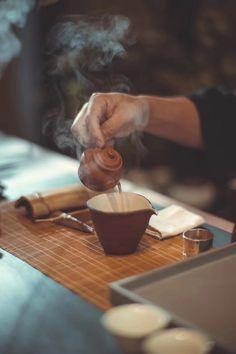
ข้อควรระวังสำหรับการดื่มชาเขียวใส่นมโดยเฉพาะอย่างยิ่งร้านที่ขายเครื่องดื่มชาเขียวในราคาถูกมากๆ อาจจะมีการใช้นมผง แทนนมสด จริงๆแล้วนมผง เป็นอีกหนึ่งตัวเลือกใหม่ๆที่เก็บรักษาง่ายเพราะเป็นผงไม่ต้องแช่เย็น แต่บางร้านไม่ได้ใช้นมผงแท้ๆ ราคาจึงถูกกว่านมผงทั่วไปก็มีพบได้ในตลาดทุกวันนี้
หากคุณเป็นหนึ่งในผู้ประกอบการร้านเครื่องดื่มชา กาแฟ นอกจากการเลือกผงมัทฉะที่เป็นองค์ประกอบหลักในการชงเครื่องดื่มแล้ว อย่าลืมที่จะทำความรู้จักกับนม ที่เป็นอีกองค์ประกอบสำคัญด้วย
อย่างนมสดพาสเจอร์ไรซ์ นิยมบรรจุในขวดพาสติก แบบขุ่น กล่องกระดาษ หรือถุงพลาสติก โดยวางจำหน่ายในตู้เย็น หรือ ตู้แช่ ซึ่งมีอุณหภูมิต่ำกว่า 10 องศาเซลเซียส เพื่อไม่ให้นมเสีย เป็นนมที่มีคุณค่า ทางอาหารใกล้เคียงกับนมโคสดมากที่สุด นมประเภทนี้จึงเหมาะกับร้านขายเครื่องดื่มอย่างน้ำชา กาแฟมากที่สุด เพราะหาซื้อง่าย และสะดวก ซึ่งแต่ละยี่ห้อก็จะมีความหอม อร่อยที่ต่างกันออกไป และเป็นนมที่มีคุณค่าทางโภชนาการสูง ข้อจำกัดของนมชนิดนี้คือ ต้องเก็บเเช่เย็นไว้ตลอดเวลา เมื่อเปิดแล้วต้องใช้ให้ หมดภายใน 2 วัน มิฉะนั้น นมอาจเสียได้
ดังนั้นบางร้านที่ไม่สะดวกใช้นมสด ก็อาจจะใช้นม UHT น้ำนมสดที่ผ่านกระบวนการให้ความร้อนที่สูงมากแต่ใช้เวลาสั้นมากจึงทำให้น้ำนมยังมีกลิ่นและรสที่ดี ไม่มีกลิ่นเป็นนมต้ม (ไหม้) เหมือนนมสดสเตอร์ไรซ์ รสชาติ ความสด อร่อยน้อยกว่า เมื่อเทียบกับนมพาสเจอร์ไรซ์ แต่ก็ยังได้รสชาติที่ดีกว่านมผงนั่นเอง เพราาะนมผง เป็นกระบวนการถนอมรักษานมสด โดยการทำให้เป็นผงแห้ง การแปรรูปเป็นผงโดยการระเหยน้ำส่วนใหญ่ออกจากน้ำนมสด ทำให้ผลิตภัณฑ์แห้งเป็นผง มีน้ำหนักเบา ประหยัดค่าใช้จ่ายในการขนส่งและเก็บได้นาน

หากใครที่ไม่รู้จะเลือกใช้นมแบบไหนดี แนะนำให้คำนึงถึงก่อนว่า นมประเภทที่จะใช้ หาซื้อได้ง่ายไหม / สูตรการชงของร้านเป็นอย่างไร และราคา ต้นทุน เมื่อรวมกันแล้วได้กำไรต่อแก้วละเท่าไหร่
ไม่จำเป็นจะต้องสต็อกนมไว้มาก เพราะต้นทุนไม่สูง นอกจากนมที่ไว้ใส่ในชาแล้ว อย่าลืมคิดต้นทุนนมเผื่อนมที่ไว้ตีฟองนมทำเป็นท็อปปิ้งด้วย หากใช้นมประเภทเดียวกันได้ ก็ถือเป็นการประหยัดต้นทุนได้อีกทาง
ที่มา
https://www.japanesegreenteain.com
https://zibafoods.com/cold-pistachio-milk-with-cardamom-and-rosewater/
http://www.maki.vn/organic-vegan-milk
https://www.alphafoodie.com/simple-homemade-soy-milk-recipe/
บทความจาก : Fuwafuwa
How to Create Your Own Custom Green Tea Blend
“ชาที่ดี ใบชาตั้งต้นต้องดี” หัวใจสำคัญแรกเริ่มเลย ก่อนจะรู้จักการเบลนด์ชาเอง ใบชาตั้งตั้นที่กล่าวถึงนี้ ก็คือชาดำ ชาเขียว และชาอู่หลง พอได้ใบชาตั้งต้นดีแล้ว จะเอามาเบลนด์กับอะไร รสชาก็จะอร่อย หอมตามไปด้วย กล่าวคือ ชาเขียวที่เหมาะกับการนำมาเบลนด์เองได้นั้น ควรเป็นชาที่ปลูกในที่ภูเขาสูง อากาศเย็น อย่างที่ญี่ปุ่น ที่นั่นเขาจะดื่มชากันสดมากๆ เพราะผลิตผลเขาดีมาก ชาที่ดี จึงมักมีจุดตัดกันที่ แหล่งที่มาของชา การปลูก ดิน แหล่งชาไหนจะสร้างชามาได้เลิศกว่ากัน
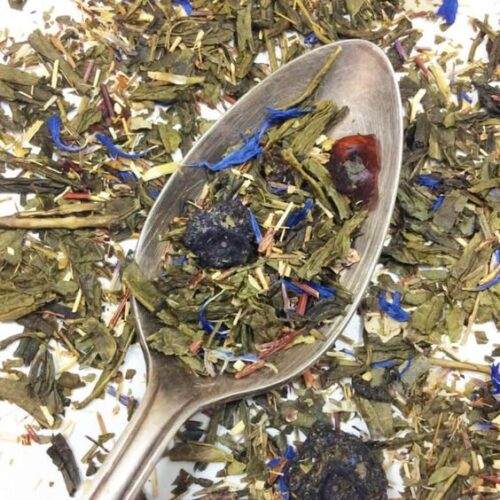
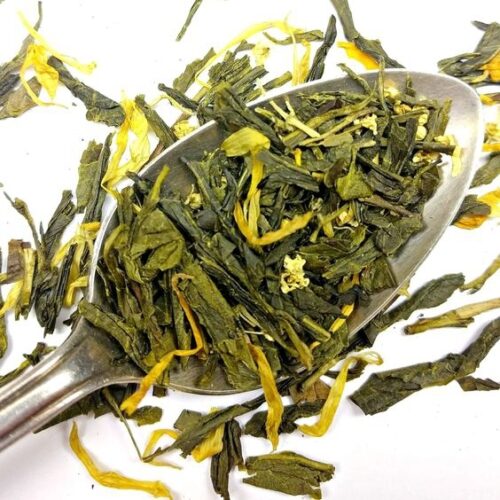
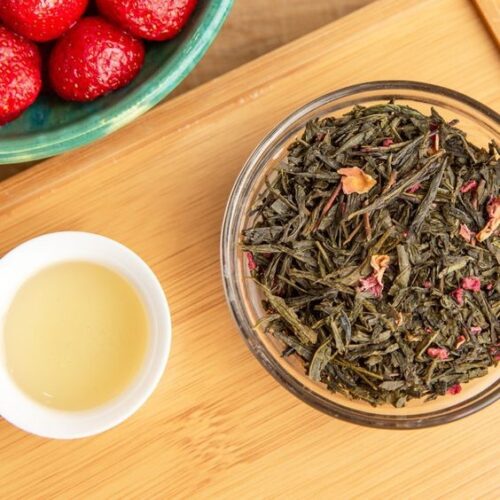
เมื่อเราได้ชาตั้งต้นที่ดี ความสนุกและซับซ้อนของชายังอยู่ที่การเบลนด์ส่วนผสมอื่นเข้าไปเพื่อให้มีกลิ่นและรสที่มีมิติน่าสนใจมากขึ้น โดยเฉพาะสมุนไพรที่นอกจากจะมีกลิ่นรสเฉพาะตัว ยังมีสรรพคุณดีๆ ที่ช่วยเรื่องสุขภาพอีกด้วย เช่น หากเลือก ดอกลาเวนเดอร์และกุหลาบตากแห้งดอกจิ๋วๆ ที่เติมความน่ารักให้ชา จะช่วยบำรุงระบบหมุนเวียนโลหิต พร้อมทั้งคลายเครียด ดอกคำฝอยช่วยลดไขมันในเส้นเลือด แถมยังช่วยให้ชาสีสวย หากใครหลับยาก ถ้าเป็น ดอกคาโมมายล์และดอกหอมหมื่นลี้ช่วยให้ผ่อนคลายและหลับสบายขึ้นดอกเก๊กฮวยแก้ร้อนใน ดีต่อหัวใจ หรือถ้าเลือกผสม ดอกอัญชันแห้งก็จะช่วยบำรุงสายตาและเพิ่มภูมิคุ้มกันให้ร่างกายใบเตยแห้งช่วยลดไข้ บำรุงผิว และแก้ท้องผูก ตะไคร้แห้งช่วยขับลมและแก้คลื่นไส้ นอกจากนี้ยังมีส่วนผสมตัวอื่นๆที่น่าลอง เช่น หญ้าหวาน ข้าวเหนียวดำ ขิง มะม่วง กระเจี๊ยบ ซินนาม่อน
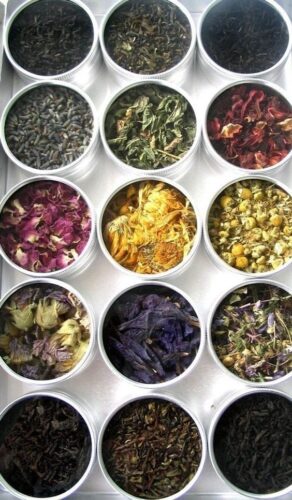
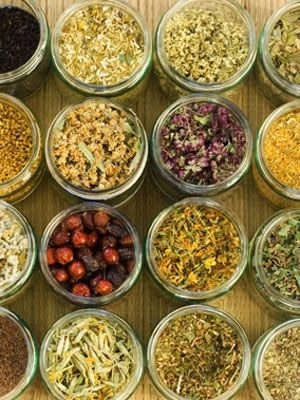
พอรู้จักสรรพคุณของชาแล้ว มาลองเริ่มเบลนด์ชากันเองดีกว่า หลักการง่ายๆ ของการเบลนด์ชาเบื้องต้น เริ่มต้นง่ายๆ จากการเลือกชาและสมุนไพรที่ชอบก่อน ต้องออกแบบรส และกลิ่นไว้คร่าวๆ ก่อนว่าต้องการรสแบบไหน ประมาณไหน อยากได้รสหลักเป็นอะไร แล้วค่อยๆ ใส่ลูกเล่นเข้าไปเพิ่ม หลักการง่ายๆ คือการค่อยๆ ปรับแก้จนได้รสที่ใกล้เคียงสิ่งที่คิดไว้ สัดส่วนใบชาและสมุนไพรที่แนะนำคือ ใบชา 3 ส่วน ต่อสมุนไพร 1 ส่วนใส่ลงถุงชา หรือที่กรองชา โดยลองสกัดชาที่เบลนด์แล้วด้วยน้ำร้อนอุณหภูมิประมาณ 95 องศาเซลเซียส เทน้ำลงไปชาเหมือนเวลาชงชาปกติ เพราะจะได้ชาที่มีรสชาติพอดิบพอดี
สิ่งที่ต้องดูนอกจากรสชาติ คือ ดูสีสัน และกลิ่นที่เข้ากันได้ เช่น ไม่ควรใส่ดอกไม้ที่กลิ่นหอมทั้งคู่ กลิ่นจะตีกัน เช่น กุหลาบ กับ ลาเวนเดอร์ หรือควรจับคู่กลิ่นรสที่เสริมกัน เช่น ใบเตยกับตะไคร้ จะยิ่งให้ความสดชื่นในตอนดื่ม หากไม่แน่ใจ จะลองชงดื่มดูก่อนก็ได้ว่าได้กลิ่น สี และรสอย่างที่ต้องการหรือไม่
แต่การเบลนด์ชาก็ไม่ใช่ว่าจับอันนั้นผสมอันนี้ก็เสร็จ เพราะเรื่องสัดส่วนเป็นเรื่องสำคัญ สมุนไพร ดอกไม้บางชนิดกว่าจะแช่ในน้ำร้อนให้กลิ่นและสี ชาเขียวก็อาจจะถูกแช่จนขมไปหมด ส่วนที่ยากของการเบลนด์ชาคือ ไม่มีทางตัดสินได้ว่ารสชานั้นจะออกมาเป็นอย่างไรในการผสมของแห้ง สุดท้ายชาต้องถูกแช่ในน้ำร้อน กลิ่นและรสก็จะเปลี่ยนแปลงไปอีกจากที่เราชอบ กว่าจะได้ชา 1 เบลนด์ต้องผ่านการลองผิดลองถูกซ้ำแล้วซ้ำเล่าไม่รู้กี่ครั้ง จนได้จุดที่สมดุลที่สุด
ส่วนร้านที่เริ่มเบลนด์ชาเองได้จนเชี่ยวชาญแล้ว สามารถต่อยอดชุดชาเบลนด์ เป็นชุดของขวัญ รวมชาสรรพคุณดีๆ กลิ่นหอมๆ ใส่โหลผูกโบ หรือแพ็คลงกล่องอย่างสวยงาม แทนกระเช้าอาหารแปรรูปที่วางขายอยู่ทั่วไป ก็น่าสนใจและบ่งบอกถึงความตั้งใจในการคัดเลือกชาคุณภาพให้ผู้รับประทับใจ
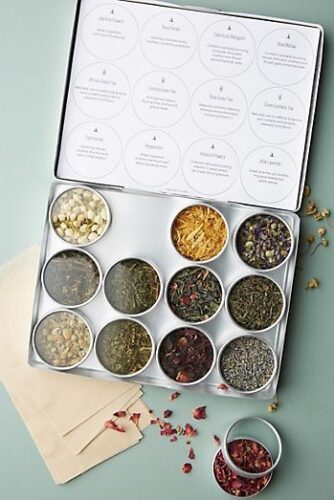
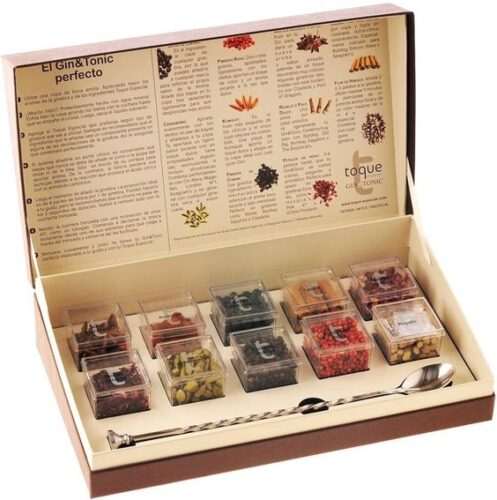
ที่มา
http://www.lovecreatecelebrate.com/homemade-peppermint-tea/
https://creationsbyfc.com/products/tea-sampler-gift-set-10pc
https://www.anthropologie.com/wellness-teas-coffees-elixirs
http://www.womansday.com/health-fitness/10-healing-herbs-used-in-teas-75249
https://www.anthropologie.com/wellness-teas-coffees-elixirs
บทความจาก : Fuwafuwa
The difference between “teapots”
Tea plays a role in various rituals and social activities. In many cultures, tea is not only brewed for its taste, but is also an expression of aesthetic art. Therefore, when choosing a teapot, one may forget to consider its practical use.
When choosing a teapot, some people choose based solely on its beauty and ease of use. But in reality, we need to consider whether the pot will be used for brewing loose leaf tea or tea bags, or simply for pouring hot water into a teacup for whisking matcha powder. Beyond its intended purpose, teapots can be made from a variety of materials, including stone, clay, glass, cast iron, silver, and stainless steel. Each material affects the flavor of the tea and is suited to different types of tea.
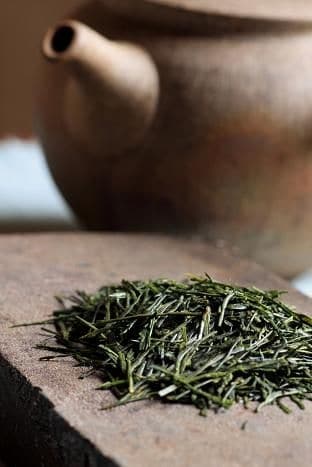

If you want to brew loose leaf tea , it is important to check the strainer that comes with the teapot. Otherwise, tea leaves may leak out when pouring, ruining the taste of the tea.
If it’s a “porcelain” teapot, it’s a high-quality, opaque white pottery fired at high temperatures. Porcelain teapots are good for mild teas such as green tea, oolong tea, and light black tea, as well as Darjeeling tea. If it’s a “cast iron” teapot, cast iron is used to make vessels for boiling water over a fire because the iron heats up quickly and retains heat well once the desired temperature is reached. The use of iron teapots for casting tea pots arose around the time that sencha began to gain popularity in Japan.
Cast iron teapots have similar properties to unglazed clay teapots in that they absorb some of the tea’s flavors, so cast iron teapots should not be washed with dishwashing liquid and should be thoroughly dried to prevent rust.
Another common type of teapot is the “ glass” teapot. This material is not ideal for teapots because it has poor heat retention, is easily soiled, and is fragile. It is ideal for brewing beautiful teas, especially blooming teas, where you can see the leaves unfolding beautifully. You also know if your tea is strong enough, and glass teapots often come with a warmer that you can place a candle in the bottom to keep the tea warm.
“Clay” teapots: The higher the temperature, the stronger the pottery will be. This type of teapot will retain heat better than other types. Naturally, unglazed pottery made from porous clay allows the tea to better absorb the aroma and flavor of the tea in the pot. However, a tip for using unglazed pottery is to avoid using dishwashing liquid because it will absorb the flavor of the dishwashing liquid. Rinse with cold water to make sure no tea leaves remain and let it dry.

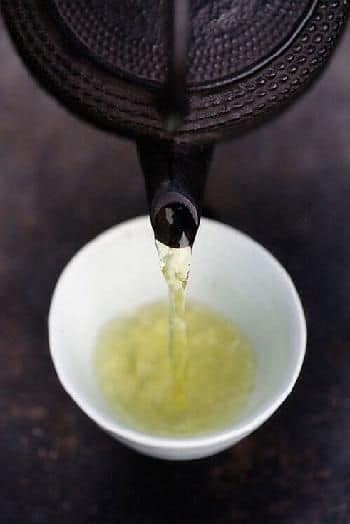
The teapots used in Japanese tea ceremonies are chosen to reflect the time of year or occasion. The design of the teapot and other tea accessories symbolizes the changing seasons from spring to autumn.
However, making delicious tea doesn’t depend solely on the teapot. A good teapot should be lightweight, retain heat, and drip-free when pouring. When tilting the pot back, the water must stop immediately, preventing the table from dripping. The lid must be secure enough so that when pouring tea, the lid doesn’t fall off. Some ceramic teapots are very heavy, making it difficult to control the amount of water poured out. They also don’t retain heat.
The temperature of the hot water is very important when brewing tea. You should choose the right one for each type of tea. For white tea or green tea that requires freshness, you should use hot water around 85 degrees Celsius, for oolong tea around 90 degrees Celsius, for red tea or puerh tea around 100 degrees Celsius.
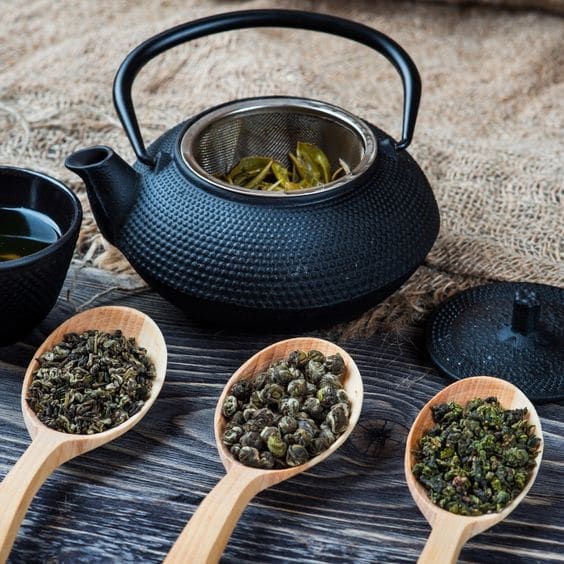
Another essential tip is to preheat the tea brewing equipment by scalding it with hot water. This is a small detail that shouldn’t be overlooked. Even if the water has been boiled to the right temperature for brewing tea, if the teapot and cups are still cold, the temperature will drop when hot water is poured in, preventing the tea from fully extracting its flavor.
Source
https://www.pinterest.com/pin/337066353331099228/
Article from: Fuwafuwa
ถุงชาอันตรายจริงหรือ…… ?
ชาที่เราซื้อตามซุปเปอร์เพื่อมาชงทานเองที่บ้าน มีทั้งแบบใบ ให้เรามาใส่ที่กรองชาเอง สำหรับคนที่ชื่นชอบการชงชาเองและมีเวลาในการพิถีพิถันดื่มด่ำกับการดื่มชา แต่ถ้าสายเร่งด่วน ขอสะดวกไว้ก่อนก็จะนิยมซื้อชาแบบที่แพ็คในถุงชา ที่จะมีเชือกยาวๆห้อยออกมาพร้อมติดแท็กโลโก้แบรนด์ เพียงแค่นำถุงชานั้นมาใส่น้ำร้อนแล้วก็ทิ้งไว้ ก็จะได้ดื่มด่ำกับชาอุ่นๆเข้มข้น
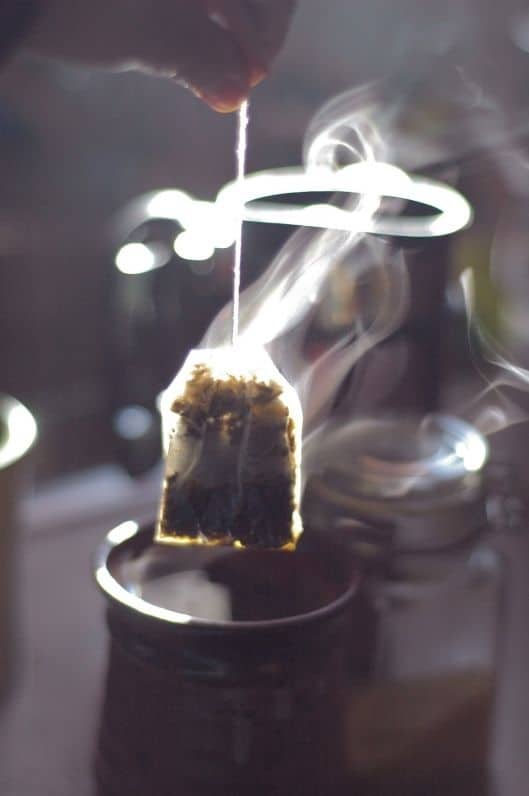
แต่ช่วงหลังๆมาที่ทุกคนเริ่มหันมาใส่ใจสิ่งแวดล้อมมากขึ้น ถึงกับมีงานวิจัยออกมาเลยว่า ถุงชาพลาสติก 1 ใบ ปล่อยไมโครพลาสติก 11.6 พันล้านอนุภาค และปล่อยนาโนพลาสติกซึ่งขนาดเล็กจิ๋วยิ่งกว่า อีกจำนวน 3.1 พันล้านอนุภาค คิดรวมเป็นปริมาณละอองพลาสติกประมาณ 16 ไมโครกรัมต่อชา 1 แก้ว เป็นปริมาณที่สูงกว่าการปนเปื้อนพลาสติกในอาหารทุกชนิดที่เคยมีการรายงานก่อนหน้านี้ แม้จะยังไม่มีรายงานถึงผลของการกินไมโครพลาสติกเข้าไป แต่เพื่อสุขภาพที่ปลอดภัย และช่วยรักษาสิ่งแวดล้อมด้วยแล้ว ควรเริ่มจากการสังเกตง่ายๆว่าถุงชาแบบไหนที่ไม่ควรใช้
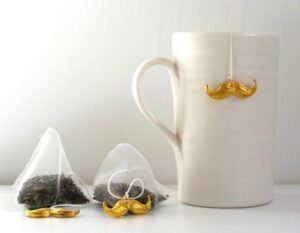
ถุงชาพลาสติกที่มีเนื้อผ้าตาข่ายดูวาวๆ ส่วนใหญ่เป็นถุงทรงปิระมิดฐานสามเหลี่ยม เป็นถุงชาที่ไม่ควรใช้เลย ถ้าจำเป็นต้องใช้ถุงชาจริงๆ แนะนำให้เลือกแบบถุงสีขาวที่ดูคล้ายกระดาษ ซึ่งอาจจะหายากหน่อยในท้องตลาดบ้านเรา ถ้าเป็นไปได้ แนะนำให้ใช้การชงด้วยการกรองใบชาออกด้วยที่กรองแสตนเลสที่มีให้เลือกหลายรูปแบบ หลายขนาดตามปริมาณใบชาที่ต้องการชง ล้างซ้ำใช้ได้บ่อยเท่าที่ต้องการ หรือถ้าใครยังเคยชินกับการชงชาโดยใช้ถุงชา แนะนำให้หาซื้อเฉพาะถุงชากระดาษ 100% ที่ไม่ฟอกขาว แล้วซื้อใบชาเป็นห่อใหญ่ๆมาตักใส่ถุงชาเองอีกวิธีคือถุงกรองชาชนิดผ้ากรองเศษใบชาเล็กๆ ได้ดีกว่าตะแกรงกรองสเตนเลส แถมยังล้างตะกอนใบชาออกง่าย และใช้ซ้ำได้นานหลายรอบเช่นกัน
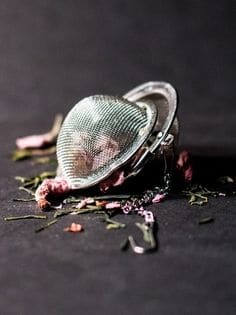
อย่างไรก็ตามใครที่ใช้ถุงชากระดาษเสร็จแล้ว อย่าเพิ่งเอาไปทิ้งทันทีนะ เพราะมันยังมีประโยชน์มากกว่าที่คิด เช่น
- ถุงชาที่ใช้แล้วรองก้นกระถาง โดยวางปิดไว้ที่รูระบายน้ำ จากนั้นก็ค่อยเทดินและปลูกต้นไม้ลงไป ถุงชาก็จะช่วยรักษาความชื้นและน้ำในดินเอาไว้ ไม่ให้ระบายออกมาเร็วเกินไป แถมยังเป็นการเพิ่มสารอาหารให้กับดินไปพร้อมกันด้วย
- กลิ่นติดมือที่ใช้สบู่ล้างไม่ออก ไม่ว่าจะเป็นกลิ่นกระเทียมหรือหัวหอมก็กำจัดไม่ยาก โดยนำถุงชามาถูมือให้ทั่ว ทั้งฝ่ามือและตามซอกนิ้ว จากนั้นก็ใช้สบู่ล้างมือตามปกติ เพียงแค่นี้กลิ่นเหม็นก็หายไปแล้ว
- เอาถุงชาที่ใช้แล้วนำไปตากแห้ง แล้วใส่ทิ้งไว้ในรองเท้า 1 คืน ก็ไม่เหลือกลิ่นเหม็นจากรองเท้าให้กังวลอีกต่อไป
- หย่อนถุงชาที่ใช้แล้ว 2-3 ถุงลงไปในอ่างจานล้างจานที่แช่จาน แล้วทิ้งไว้ประมาณ 5 นาที ถุงชาก็จะช่วยดักจับคราบมันเอาไว้ แค่ล้างตามปกติ จานที่มีคราบมันมากๆก็จะกลับมาสะอาดวิ้ง
- หยดน้ำมันหอมระเหยกลิ่นเปเปอร์มินต์ลงไป แล้ววางไว้ตามกล่อง ลิ้นชัก ตู้เก็บของ หรือบริเวณที่มักจะมีแมลงมาทำรัง ก็ช่วยป้องกันไม่ให้สัตว์อันตราย เช่น มดหรือแมงมุม กลับมาอีก
- แก้ปัญหาตาบวม เนื่องจากชามีสารแทนนินที่มีคุณสมบัติสามารถลดอาการบวมได้ ดังนั้น หลังจากที่เราใช้ถุงชาเสร็จแล้ว ควรนำถุงชาที่กำลังอุ่นๆ อยู่นั้นมาวางแปะลงบนเปลือกตาประมาณ 5-10 นาที อาการตาบวมก็จะค่อยๆ บรรเทาลงและหายไปได้
- บรรเทาอาการแสบร้อนจากแสงแดด เพียงนำถุงชาไปแช่ตู้เย็นสักครู่เพื่อให้ความเย็น จากนั้นนำมาประคบลงบนผิวที่มีอาการแสบร้อน นอกจากผิวที่ได้รับความแสบร้อนจากแดดเผาแล้ว การที่ผิวของเราไปถูกความร้อนอย่างอื่นมาก็สามารถใช้ถุงชาเย็นๆ มาประคบได้เช่นเดียวกัน
ที่มา
https://theherbalacademy.com/free-ebook-herbal-tea-throughout-the-seasons/
http://katescreativespace.com/2012/09/09/tea-with-a-twist/
https://www.sanook.com/women/79957/
บทความจาก : Fuwafuwa
Can tea be made into cold brew?
Many people may be familiar with Cold Brew coffee, which is sweeter than coffee brewed using other methods due to its low acidity. Cold water extracts lower levels of caffeine than hot water. Tea lovers may wonder, can tea be processed in the same way as Cold Brew coffee?
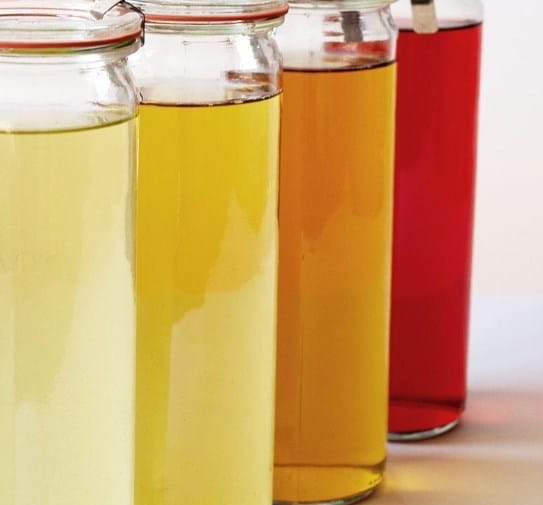
The principle behind Cold Brew is cold extraction. You can use water at room temperature or cold water (5-15 degrees Celsius). Normally, if we use hot water to make tea, the catechins and caffeine in the tea leaves will come out with the hot water because these two substances dissolve at high temperatures, around 80-90 degrees Celsius and above. These two substances will give a bitter taste. Meanwhile, the umami taste of tea that many people like to enjoy, which is caused by amino acids, will dissolve at temperatures from 60 degrees Celsius and above. Therefore, green teas rich in umami flavor, such as Gyokuro, must be brewed with water at a temperature of 40-60 degrees Celsius.
Therefore, if we steep the tea leaves in cold water, the bitter taste of the tea will be less than when brewed hot. This is suitable for those who like to drink tea with a smooth umami flavor.
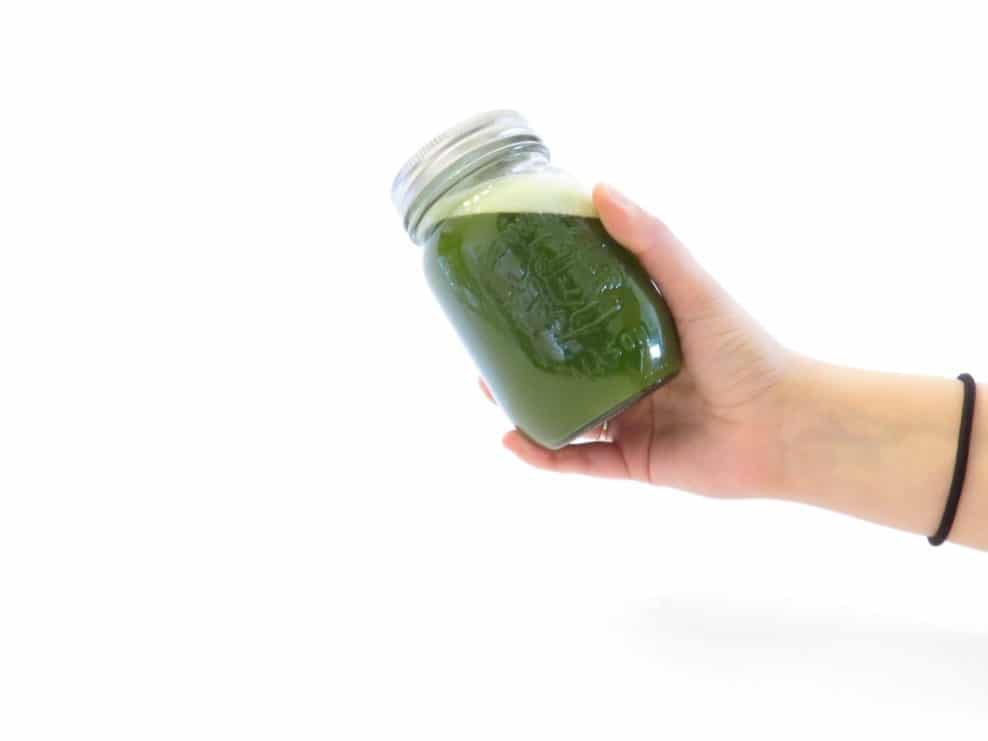
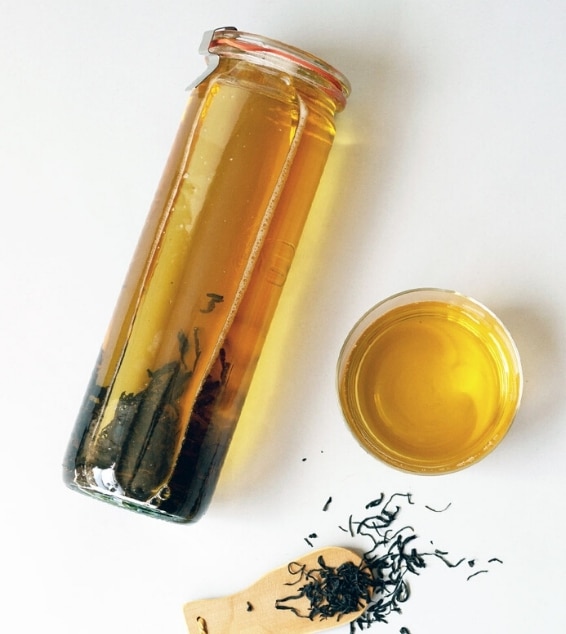
How to make cold brew tea, both black tea and oolong tea
- Use 4 grams of tea leaves per 200-250 ml of water.
- Put the tea leaves in a disposable tea bag.
- Place the tea bag with the tea leaves in the water and close the lid tightly.
- Soak the tea in the refrigerator for 6-12 hours.
- Once it’s done, remove the tea bag. This cooled tea can be stored in the refrigerator for about 3-4 days without any change in taste or added bitterness.
But be careful with green tea, it can become bitter very easily. Reduce the amount of tea to 3 grams of tea leaves per 500 ml of water and steep the tea for only 3-6 hours. Normally, when brewing hot tea, we usually get a fragrant smell from the brewing, but brewing cold brew tea will not have a fragrant smell that is inviting to drink.
Although cold-brewed tea leaves can be re-brewed hot, the flavor will be less, so it’s best to discard them.
To use green tea powder to make Cold Brew, put 1 teaspoon of tea powder into a bottle with a lid and pour in 1.5 cups of water. Close the lid and shake for about 15 seconds.
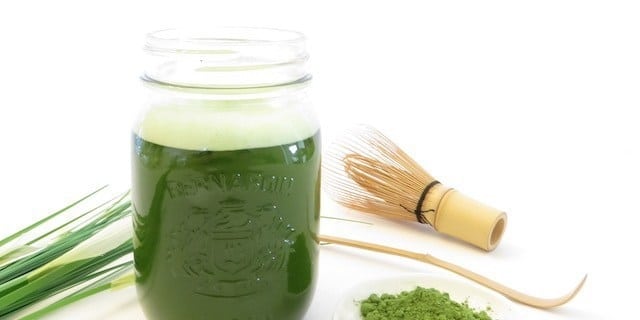
Source
https://pickledplum.com/cold-brew-tea/
https://theteacupoflife.com/2019/04/cold-brew-matcha.html
https://matchaoutlet.com/blogs/recipes/cold-brew-summer-matcha-drink
Article from: Fuwafuwa
How do you sprinkle matcha powder on desserts to make them look delicious?
Normally, green tea used in baking can be either leaf or powdered. If using leaf, it must be brewed in hot water and the tea leaves filtered out before use. Therefore, we prefer to use powder because it has a wider range of uses. It can be used dry or brewed and then used in liquid form. Many people who choose to use powder to make desserts still have problems with decorating the desserts not turning out as expected.
Sprinkling matcha powder on the cake and it seeps into the cake is a normal occurrence because the tea powder will absorb moisture and become wet when left for a long time. Therefore, the color may not be smooth.
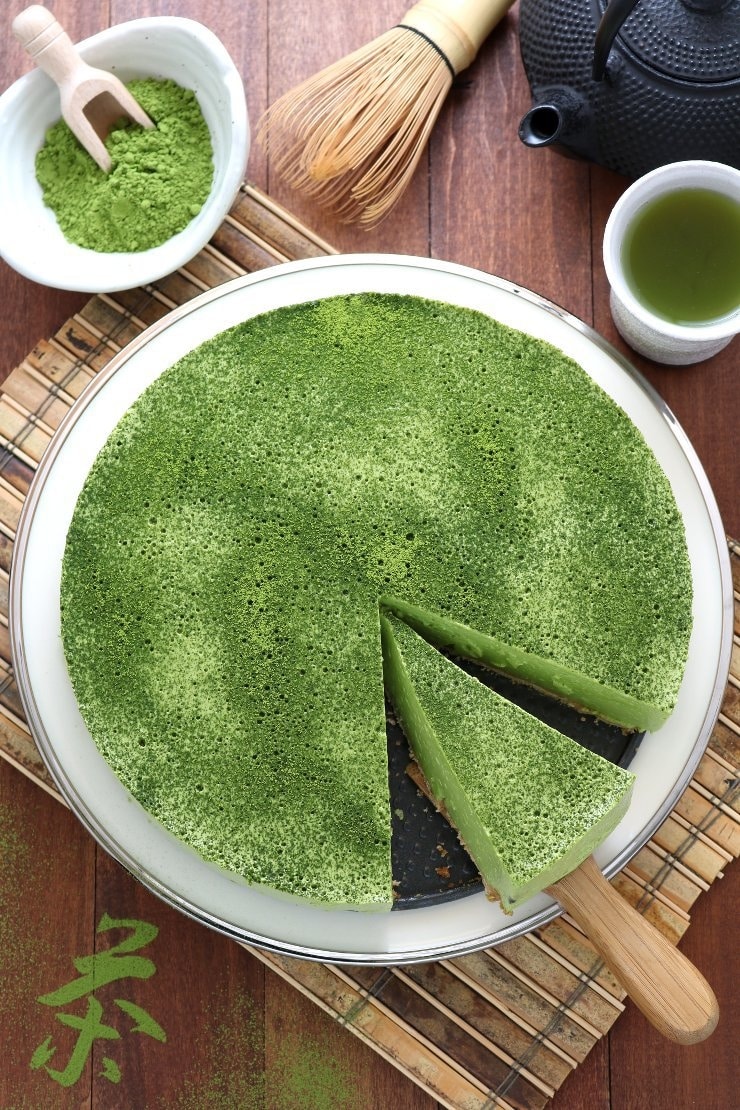
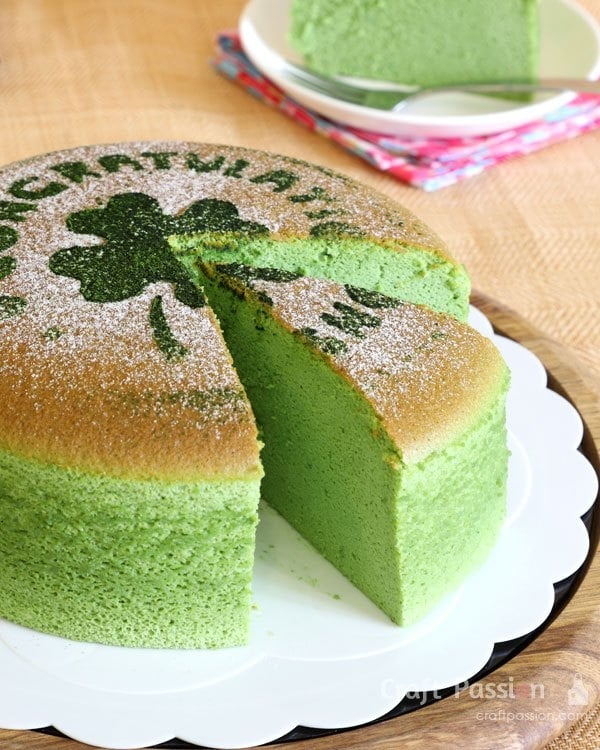
A little trick for decorating desserts is to sprinkle it on when you’re ready to serve or close to the time you’ll eat it to keep the green color uniform. It’s also recommended to sprinkle it on before you serve it with matcha powder. Leave the cake in the refrigerator without covering it. Let the cake dry for about 2 hours. This will make the matcha powder stick more easily and prevent it from melting and seeping into the surface. Or if you want to decorate the cake with patterns, after removing the cake from the refrigerator, place a sheet of paper over the cake without pressing it down. Then sprinkle the matcha powder through a fine sieve along the lined lines (this step must be done quickly).
However, some people mix matcha powder with a little icing sugar, which helps a bit, as icing sugar contains cornstarch, which helps to retain some moisture. Or, they use matcha powder specifically for sprinkling on top of desserts, but it’s more expensive than regular matcha powder and is available at Japanese bakeries.
For those who don’t have icing sugar, you can grind the sugar until it’s fine and mix in about 3% cornstarch. It will have the same consistency as icing sugar and can be used as a substitute.
Another caution when sprinkling matcha powder on desserts is the color, flavor, and aroma. The darker the matcha powder, the less bitter it will be, indicating well-preserved, high-quality matcha. Lighter greens indicate lower-grade tea leaves, produced from large, sun-exposed green tea leaves. Green tea connoisseurs will know right away which grade of green tea was used in their desserts. Another way to add value to your desserts is to write a short message stating the source of their premium matcha powder. This will significantly increase the value of your desserts, as some people don’t know whether the deep green color is real green tea powder or food coloring.
In addition, tea’s flavor is usually slightly sweet, slightly bitter, and slightly astringent. However, lower-grade teas tend to be more bitter and astringent. Therefore, choosing the right matcha powder to sprinkle on your desserts is another important consideration.

Source
Tastykitchen.com
http://cookingwithjapanesegreentea.blogspot.com/
https://www.justonecookbook.com/
http://www.landsandflavors.com/vegan-matcha-mousse-cake/
Article from: Fuwafuwa

